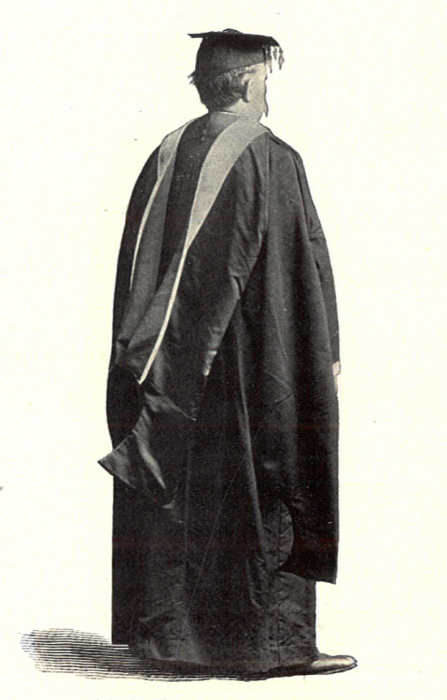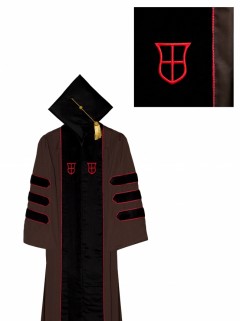Brown University
Rhode Island
1764





For obvious reasons Brown University students began using the color brown (often described as “seal brown”) as their school color in 1866, but evidently this was never made official through university legislation. In 1925 the university’s dark shade of brown was defined as “tobacco” by the Textile Color Card Association of the United States. White was also being used as a secondary color by the late 1800s, and in the 1950s cardinal was adopted as a third color.
Citations in the World Almanac (listed by cover date; color information is from the previous year): brown/white (1895-1913); brown (1914-1915); brown/white (1916); brown (1923-1931); brown/white (1934-1935)

Having heard complaints that the academic hood pattern was too drab, in 1952 the president of Brown University appointed a committee to select official colors for the academic hood of the institution. In 1954 the committee recommended that academic hoods be “seal brown” with a “cardinal red” chevron. This was defined as the same shade of red as the cross in the university coat of arms. The Intercollegiate Bureau revised Brown’s hood to brown with a cardinal chevron, a change that first appeared in a 1958 IBAC list. A 1969 IBAC list described the shade of brown as “seal brown”, the shade described in the 1954 university regulation.
Here the original c.1897-98 Intercollegiate Bureau of Academic Costume hood lining has been used.

Brown University was cited as a client of Cotrell & Leonard in “The Cap and Gown in America”, a May 1893 article in The University Magazine written before the creation of the 1895 Intercollegiate Code of Academic Costume. The Intercollegiate Bureau of Academic Costume (IBAC), which was affiliated with Cotrell & Leonard, probably assigned Brown University a hood lining that followed the stipulations of the new Intercollegiate Code in 1895 or 1896, because a reporter covering commencement ceremonies at the University of Chicago for the Indianapolis News (9 July 1896) mentioned Brown as one of a number of colleges and universities that used academic costume. The university was also stated to be a client of Cotrell & Leonard (the depository of the IBAC) in a November 1898 advertisement in The Intercollegian.
The single color hood lining of “brown” was identically cited in IBAC lists from 1902, 1910, and 1918, but by 1927 the Intercollegiate Bureau was describing the shade as “dark brown”. Consistently, “brown” had also been how the IBAC described the dark brown (almost bistre) Faculty color for the Fine Arts.
That said, one should note that an article entitled “Academic Millinery” in the September 1909 issue of the American Educational Review described the lining of Brown’s hood as “golden brown”, but there are errors in this essay and so it is not known how trustworthy this hood description is.

On the right is a photograph from the Oak Hall company of the optional doctoral gown style approved by the Brown University administration in 1968. It is tailored in seal brown fabric, and the black velvet sleeve bars and facings are edged with cardinal piping. A simplified version of the university’s coat of arms is embroidered in cardinal thread on the upper part of the gown’s velvet facings; a closeup of this embroidery is shown in the inset photograph.
Brown University had been the first institution to depart from the fabric color regulations of the 1895 Intercollegiate Code of Academic Costume; in 1912 the university authorized velvet mortarboards in “seal brown” color for members of its administrative officers.